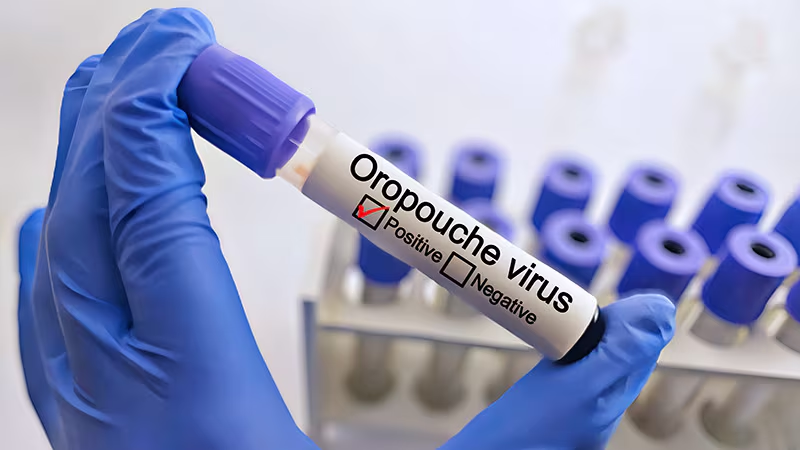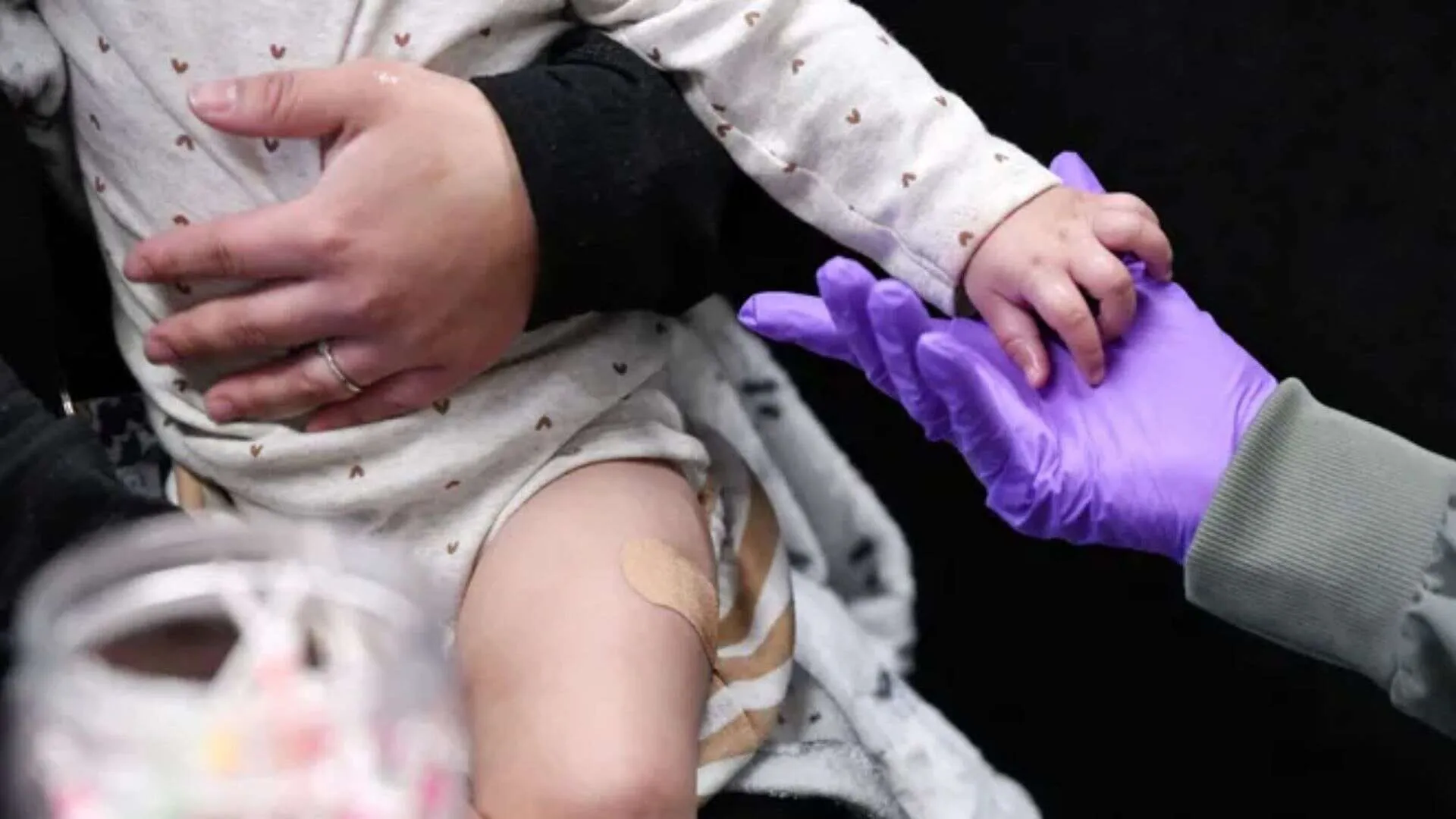Oropouche Virus Disease: An Emerging Threat in the Region of the Americas
The Oropouche virus, a member of the Orthobunyavirus genus, has long been a subject of concern for public health authorities, particularly in the tropical and subtropical regions of the Americas. First identified in the 1950s in the Oropouche River region of Brazil, this virus has since been responsible for sporadic outbreaks of disease in various parts of South America. While Oropouche virus disease (OVD) has remained relatively underrecognized compared to other tropical diseases like dengue, Zika, or chikungunya, its potential to cause significant public health challenges has drawn increasing attention in recent years.
In this long description, we will explore the Oropouche virus, its epidemiology, transmission dynamics, clinical manifestations, and current efforts in research and response in the Americas. We will also highlight the factors contributing to the increased risk of outbreaks and discuss the steps being taken to mitigate the impact of Oropouche virus disease in the region.
The Oropouche Virus: An Overview
Oropouche virus (OROV) is primarily transmitted to humans through the bites of infected mosquitoes. It belongs to the Peribunyaviridae family and is closely related to other mosquito-borne viruses, such as the La Crosse virus, Bunyamwera virus, and the Rift Valley fever virus. However, OROV’s specific characteristics, including its vector species and unique pathophysiology, set it apart from its counterparts.
The virus was first isolated in the 1950s when a group of researchers working in the Oropouche River area in Brazil found it in the tissues of a monkey and mosquitoes. Since then, the virus has been confirmed to affect a wide range of animals, including humans, non-human primates, and other mammals.
Transmission of Oropouche Virus
The transmission of Oropouche virus is primarily vector-borne, meaning it is spread by the bite of infected mosquitoes. The main mosquito species responsible for the transmission of the virus are Culex mosquitoes, particularly Culex quinquefasciatus, which are commonly found in urban and peri-urban areas throughout tropical regions.
The primary transmission cycle of Oropouche virus involves Culex mosquitoes biting an infected host, such as a non-human primate, a rodent, or a human, and then transmitting the virus to new hosts through subsequent bites. These mosquitoes often breed in polluted water sources, which are abundant in urban areas, providing ideal breeding grounds for the vector.
In addition to mosquito-to-human transmission, there is some evidence of human-to-human transmission through direct contact with bodily fluids, such as blood and respiratory droplets. However, these secondary routes are less common than vector transmission and are generally not considered significant in the spread of the disease.
Geographic Distribution and Spread in the Americas
Oropouche virus disease is primarily confined to the tropical and subtropical regions of South America, particularly in countries like Brazil, Peru, Colombia, and Bolivia. The disease has been reported in both urban and rural areas, with significant outbreaks occurring in densely populated cities and their surrounding rural areas. As the virus continues to spread, it poses a growing public health concern for neighboring countries and, potentially, the wider Americas region.
In recent years, the number of Oropouche virus cases has increased, and outbreaks have been reported in new regions within South America. The urbanization of many tropical regions, increased travel, and climate change factors like rising temperatures and altered rainfall patterns have contributed to the broader distribution of the virus. With global warming, the range of the Culex mosquito vector is expanding, which increases the risk of Oropouche virus outbreaks in areas that were previously unaffected.
While Oropouche virus disease remains confined mainly to South America, there is growing concern about its potential to spread to other regions, including Central America and the Caribbean. The movement of people, animals, and goods, as well as the growing interconnectedness of the Americas, makes the region more vulnerable to the introduction and spread of vector-borne diseases.
Clinical Manifestations of Oropouche Virus Disease
Oropouche virus disease typically presents as an acute febrile illness with nonspecific symptoms that can make diagnosis challenging, especially in areas where multiple other vector-borne diseases are common. The clinical manifestations of OVD vary in severity and duration, and in most cases, the disease is self-limited and resolves without complications. However, in rare instances, severe manifestations and complications can occur.
1. Initial Symptoms
The onset of Oropouche virus disease is usually sudden, with symptoms appearing within 3 to 7 days after exposure to the virus. Initial symptoms include:
- Fever: A high fever is the hallmark of Oropouche virus infection and typically persists for several days.
- Headache: Often severe and associated with general malaise.
- Muscle and joint pain: Myalgia and arthralgia are common, with many patients complaining of joint stiffness and discomfort.
- Fatigue: Profound fatigue and weakness are often reported, making it difficult for individuals to perform daily tasks.
2. Respiratory Symptoms
Many patients with Oropouche virus disease also experience upper respiratory symptoms, including a sore throat, cough, and congestion. These respiratory symptoms can mimic other viral illnesses like influenza, complicating the diagnosis.
3. Rash and Swollen Lymph Nodes
A characteristic skin rash may develop in some patients. The rash is often maculopapular (red and raised spots) and is most commonly seen on the face, trunk, and extremities. Swollen lymph nodes, or lymphadenopathy, are also frequently observed.
4. Severe Complications
In rare cases, Oropouche virus infection can lead to more severe complications, including encephalitis (inflammation of the brain), meningitis (inflammation of the membranes surrounding the brain and spinal cord), and even hemorrhagic manifestations. These severe complications typically occur in patients with weakened immune systems or those who have underlying health conditions, such as chronic diseases.
While the majority of cases are mild and self-limiting, those that develop severe symptoms require intensive medical management, particularly in the case of neurological complications. Early detection and supportive care are essential to improving outcomes.
Diagnosis of Oropouche Virus Disease
Diagnosing Oropouche virus disease can be challenging, particularly in areas where other tropical diseases with similar symptoms, such as dengue, Zika, and chikungunya, are common. A clinical diagnosis based solely on symptoms is insufficient, as many of the signs overlap with other viral illnesses.
The gold standard for diagnosis is the detection of the Oropouche virus genome or antibodies in blood or cerebrospinal fluid (in cases of neurological involvement). Molecular techniques like polymerase chain reaction (PCR) are used to detect viral RNA, while enzyme-linked immunosorbent assays (ELISA) are used to identify antibodies against the virus.
In some cases, viral isolation and serological testing may be necessary to confirm the diagnosis. However, in regions with limited laboratory infrastructure, these diagnostic methods may not be readily available, making it challenging to accurately diagnose and monitor outbreaks.
Treatment and Management of Oropouche Virus Disease
Currently, there is no specific antiviral treatment for Oropouche virus disease. Treatment is symptomatic and supportive, focusing on alleviating fever, pain, and inflammation. Patients with OVD are often given antipyretics (fever-reducing drugs), analgesics (pain relievers), and hydration to manage symptoms.
In cases of severe neurological involvement, patients may require hospitalization and more intensive care, including intravenous fluids and monitoring of neurological status. Because the virus rarely causes life-threatening illness, the vast majority of patients recover fully with appropriate symptomatic treatment.
Prevention and Control Strategies
Given the lack of a specific antiviral treatment, prevention remains the cornerstone of controlling Oropouche virus outbreaks. Key strategies include:
1. Vector Control
The primary method of preventing Oropouche virus transmission is controlling the mosquito vector. This involves reducing mosquito populations through the use of insecticides, elimination of breeding sites (such as standing water), and public education campaigns to encourage the use of bed nets, insect repellents, and protective clothing.
2. Surveillance and Early Detection
Effective surveillance systems are crucial in identifying and containing Oropouche virus outbreaks. This includes monitoring mosquito populations, reporting suspected cases, and rapidly conducting laboratory testing to confirm diagnoses. Early detection allows for timely interventions and the prevention of widespread transmission.
3. Public Health Education
Educating the public about Oropouche virus disease and its prevention is vital in reducing the risk of transmission. Information campaigns should focus on the importance of using mosquito repellent, avoiding mosquito bites, and recognizing the early signs of the disease. These efforts are especially important in areas where Oropouche virus is endemic or where outbreaks have been reported.
Conclusion: The Growing Threat of Oropouche Virus Disease
While Oropouche virus disease has been historically overshadowed by other tropical diseases, the growing number of reported cases in the Americas underscores the need for increased awareness, research, and response efforts. The spread of the virus is closely tied to environmental and social factors, such as urbanization, climate change, and increased mobility, all of which have contributed to its expanding range.
The challenge of controlling Oropouche virus disease is compounded by diagnostic difficulties, a lack of specific antiviral treatments, and limited resources for mosquito control in some regions. However, with ongoing research, improved surveillance systems, and better public health education, it is possible to mitigate the impact of Oropouche virus disease and reduce its transmission in the region.
As the Americas continue to face emerging infectious diseases, it is crucial that health authorities prioritize the detection, monitoring, and prevention of diseases like Oropouche virus. Through collaboration, innovation, and continued vigilance, we can work to protect vulnerable populations and prevent future outbreaks of this enigmatic virus.









